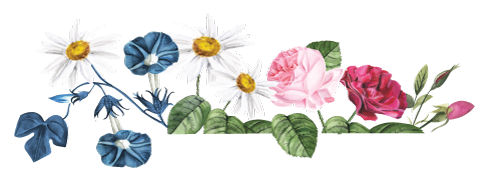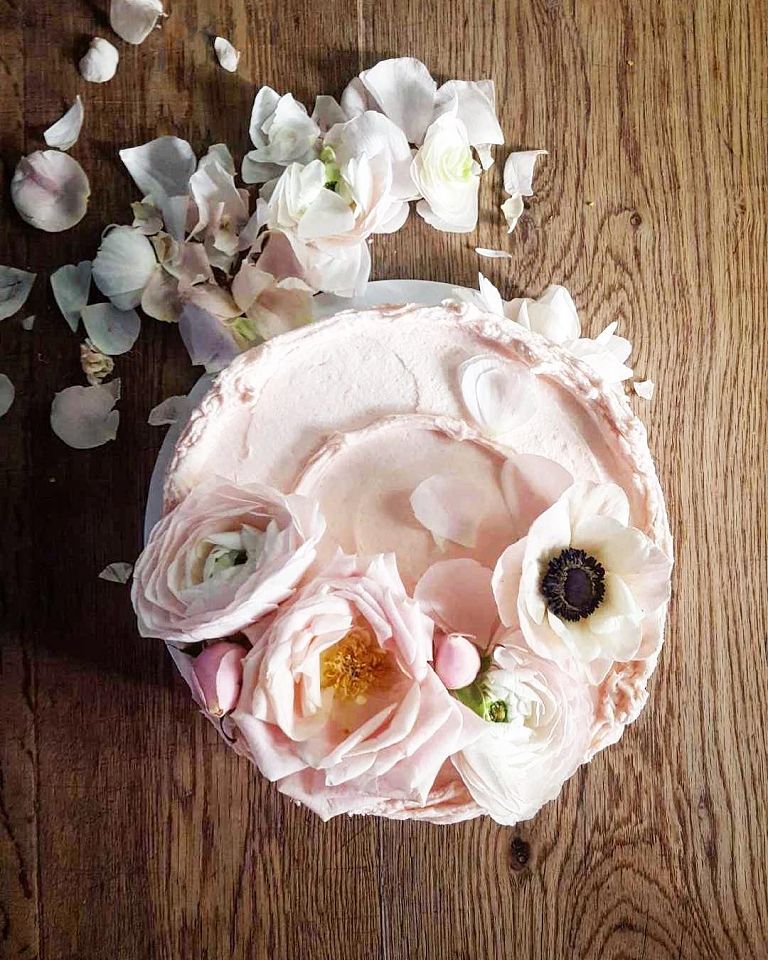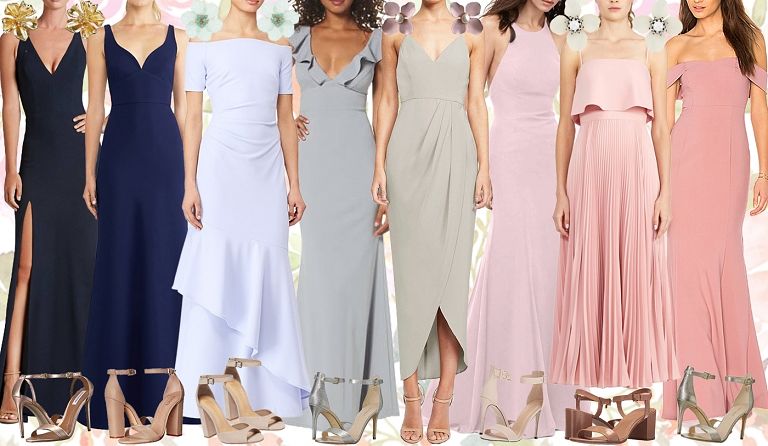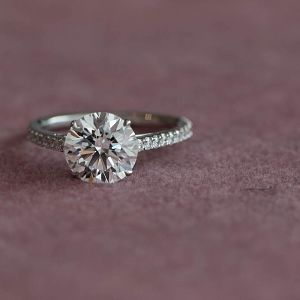
Originally stemming from ancient Egyptian tradition, the process of creating custom engagement rings has been adopted by cultures around the world for thousands of years. Since it’s arguably one of the largest purchases your significant other will make in their lifetime, it only makes sense that both the betrothed-to-be and the one proposing not only love the ring they’re creating, but also feel like they’ve had a significant role in the creative process. Crafting a piece of jewelry that will be beloved over time, and potentially passed down from generation to generation, takes energy, thought, and dedication. Below, two top jewelers provide tips, tricks, and things to know before purchasing a custom engagement ring.
1. Understand the differences between custom and handmade
“Unfortunately, the word custom gets thrown around too much these days,” says Colin Shah of Shah & Shah Distinctive Jewelers in Washington, D.C., one of the preeminent custom jewelers in our nation’s capital since 1929. “A custom ring can mean many things depending on the jeweler; some work with a computer to produce a CAD (computer aided design), which generates a wax mould that after casting the ring will have the pre-selected gemstones set. Others consider offering a selection of premade semi-mountings with room to squeeze different size or shaped gemstones. By contrast, a handmade design is individually made, one by one, from solid precious metal for one specific hand for one specific gemstone.”
On that note, custom should always “refer to a handmade product,” says Justin Engle of Howard Engle Diamonds & Fine Jewelry, and part of that process is “leaving an element of trust in the artist crafting the ring.” (Full disclosure: Justin created my own engagement ring.)
But don’t be spooked: “Custom doesn’t need to be complicated!” says Engle.
2. Try everything on!
“If I had a dollar every time someone came into the store certain they knew exactly what they wanted only to choose something completely different, I could probably retire a little early,” says Shah. “You’d be surprised what you like on your hand versus seeing photos on social media or on someone else’s hand. We have found one of the major reasons people are ultimately disappointed in their ring has nothing to do with quality or size but rather a foggy disappointment that they just don’t have the same visceral reaction wearing it as they did seeing it.”
It can be a little intimidating depending where you shop, but the best remedy can be trying on as many styles as you possibly can: over budget, under budget, big, small, gold, platinum, all the shapes, etc. “In our boutique, we allow our clients to try a few on at a time to really help contrast what they are seeing. We are asking an object to hold emotion, so there can be a lot of pressure; another boon to trying as much on as possible is if you aren’t sure what you like you can start with what you don’t like, which somehow always comes easier,” says Shah. Shah also recommends trying to find and visit stores with access to natural light and plenty of mirrors. “The best times to look at gemstones and diamonds in particular is between 10:00 A.M. – 2:00 P.M. when the sun is its whitest and brightest,” he notes.
“You may have noticed there is very limited natural light in the majority of traditional jewelry stores; most go to great lengths to control their lighting environment, so the jewelry looks as sparkly as possible—sunlight will always give you a more honest look. As for the mirrors, we try to have our brides stop shopping while only looking at their hand, and consider how the ring feels in a full length mirror, since that is how one will be appreciating it as the years go on,” Shah says.
Engle recommends falling in love with the center stone and working your way out from there; “settings change over time and you can always recreate them, but the center stone is the main event,” he says.
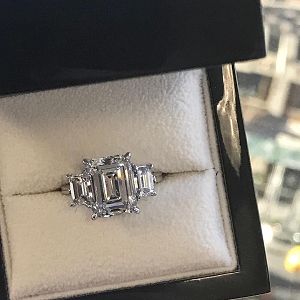
3. Find the right jeweler
“No one really, actually understands diamonds if they aren’t in the business,” Shah says. “In the early days of the Internet, we would see guys coming in with varying states of PTSD; sleep deprived, carrying along reams of research. These information addicts were armed to the teeth with just enough information to confuse themselves and lose sight of simply finding something beautiful that their soon-to-be fiancé would love, in their budget.”
However, Shah says: “Jewelry consumers today are not like my father’s customers. There is so much information out there now, in fact, that our clients are relying more and more on our help to sort through the barrage of fact versus fiction.”
Selecting the perfect engagement ring is a collaborative process, and it usually works the best when all parties involved are interested in protecting the relationship. “When the ring needs to be resized, repaired, appraised, or even, God forbid, replaced in the event of a loss, having that established relationship is crucial,” Shah says. Your jeweler can also answer all your questions about the 4 Cs: cut, color, clarity, and carat weight, or what the right size, shape, metal, etc. would be for any piece. “Private and family jewelers are invested in the life of the relationship, not maximizing profits for single sales. Now in our 83rd year, I’m lucky enough to be meeting guys whose grandparents bought their rings from us!”
4. Spending a little more at the beginning may save money in the long term
“We get asked this question a lot here: customers come in looking to save money where they can without sacrificing design or diamond size,” says Shah. “Despite gold’s historic highs recently, the cost of a platinum versus white gold ring is between 15- 20% more depending on the jeweler. The benefit to platinum is that it is the most durable metal and stays white. Oftentimes, people do not consider the long term cost of choosing white gold over platinum and end up returning to their jeweler over and over through the years to get it rhodium plated, which is the treatment necessary to make gold look white.”
5. Clarity on your budget
“Although it helps to be clear in a general sense of what your soon to be fiancé wants, it remains paramount that you are firm and clear about your budget,” says Shah. “Many of our clients are so concerned about the style of the ring, that the quality and expense of the stone is secondary, when in fact that should be the primary budgeting allocation. After all, if they decide they want to reset the diamond someday, do you really want to have half the value of the ring disappear?”

6. Alternative stones
“With the rise in popularity of colored gemstones, a buyer’s primary concern should be durability,” says Shah. Aquamarine may be your birthstone, for example, but “sapphires and rubies are the second most popular to diamonds in large part to their durability in addition to their beauty and rarity.”
7. Get an appraisal and make sure you find the right insurance
Not all jewelry is created equal and unfortunately not all insurance companies are either. “Very few people ask their insurers what happens in the event of a loss when it comes to jewelry until it’s too late,” Shah says. Handmade jewelry is worth more than a casted (CAD) piece, and certain stones are more valuable than others that may look exactly the same. “We have seen situations where an insurance company will try to steer clients to their “retail partners” during a claim to try to get you close to what you had before, which is code for them paying the least amount possible to get you a similar ring. This type of coverage is not what you want. “Make sure you interview your potential insurer, and understand exactly what the steps are in the event of a loss,” Shah warns.









